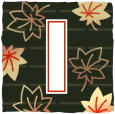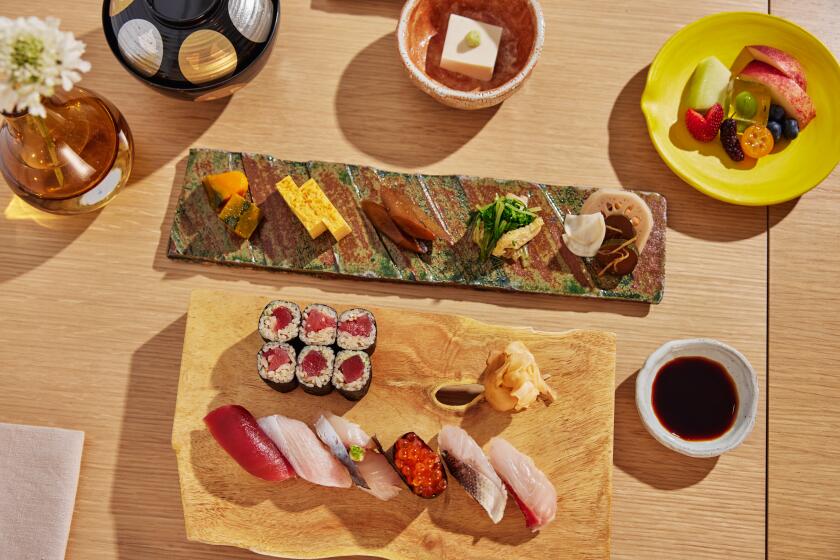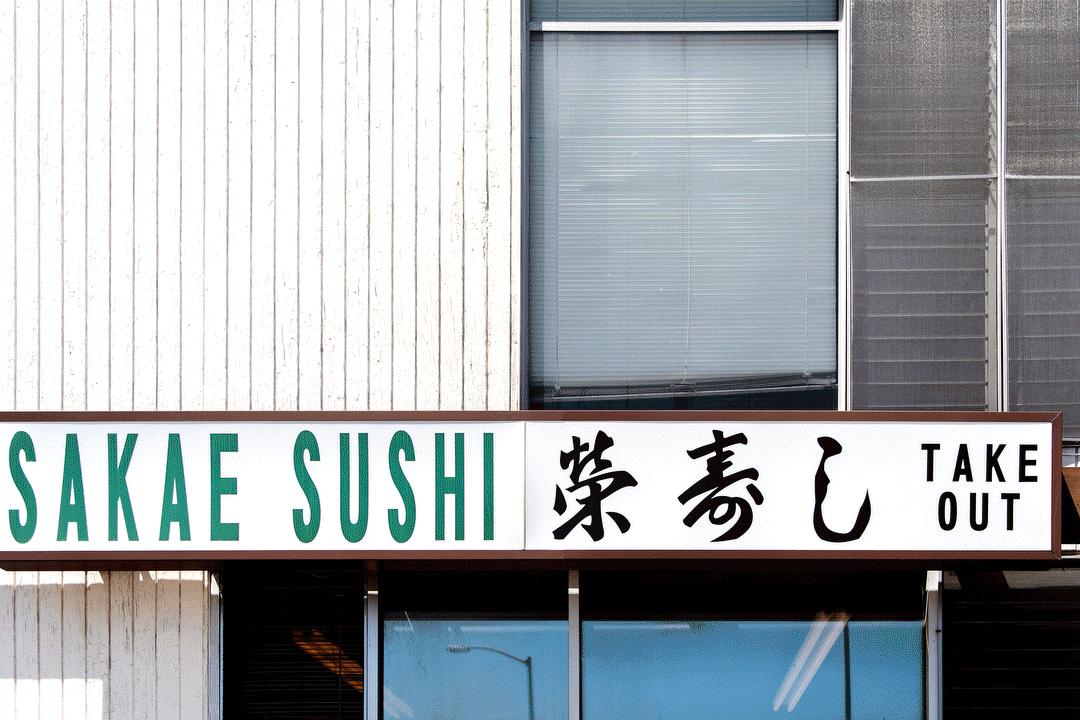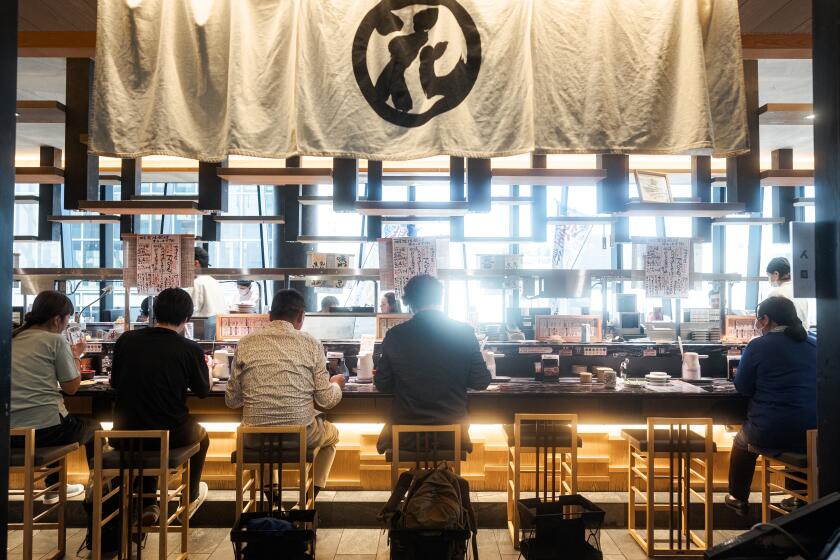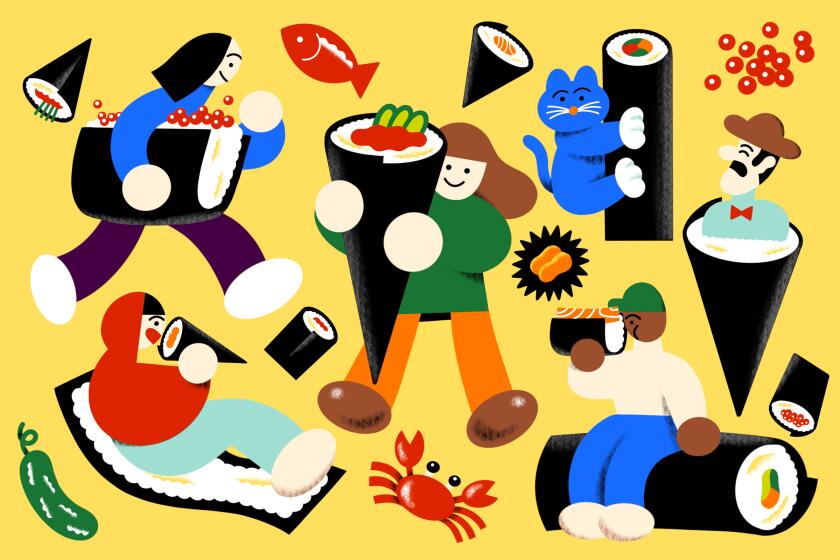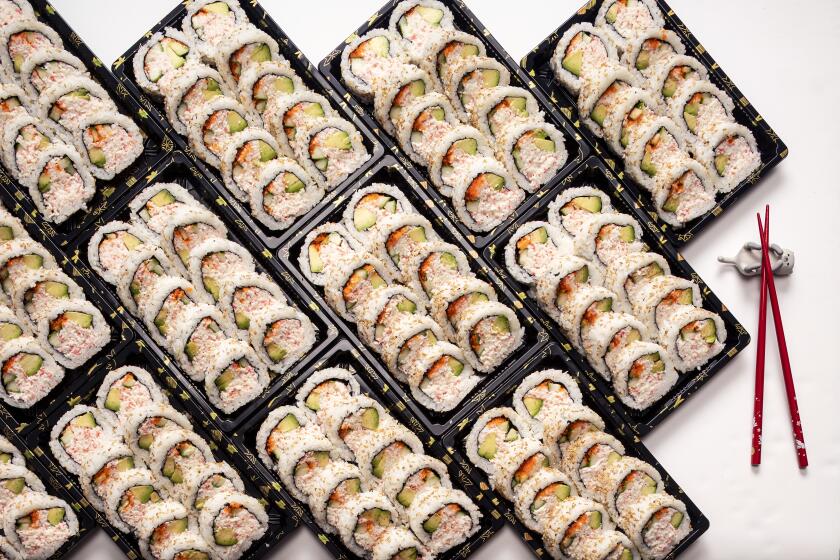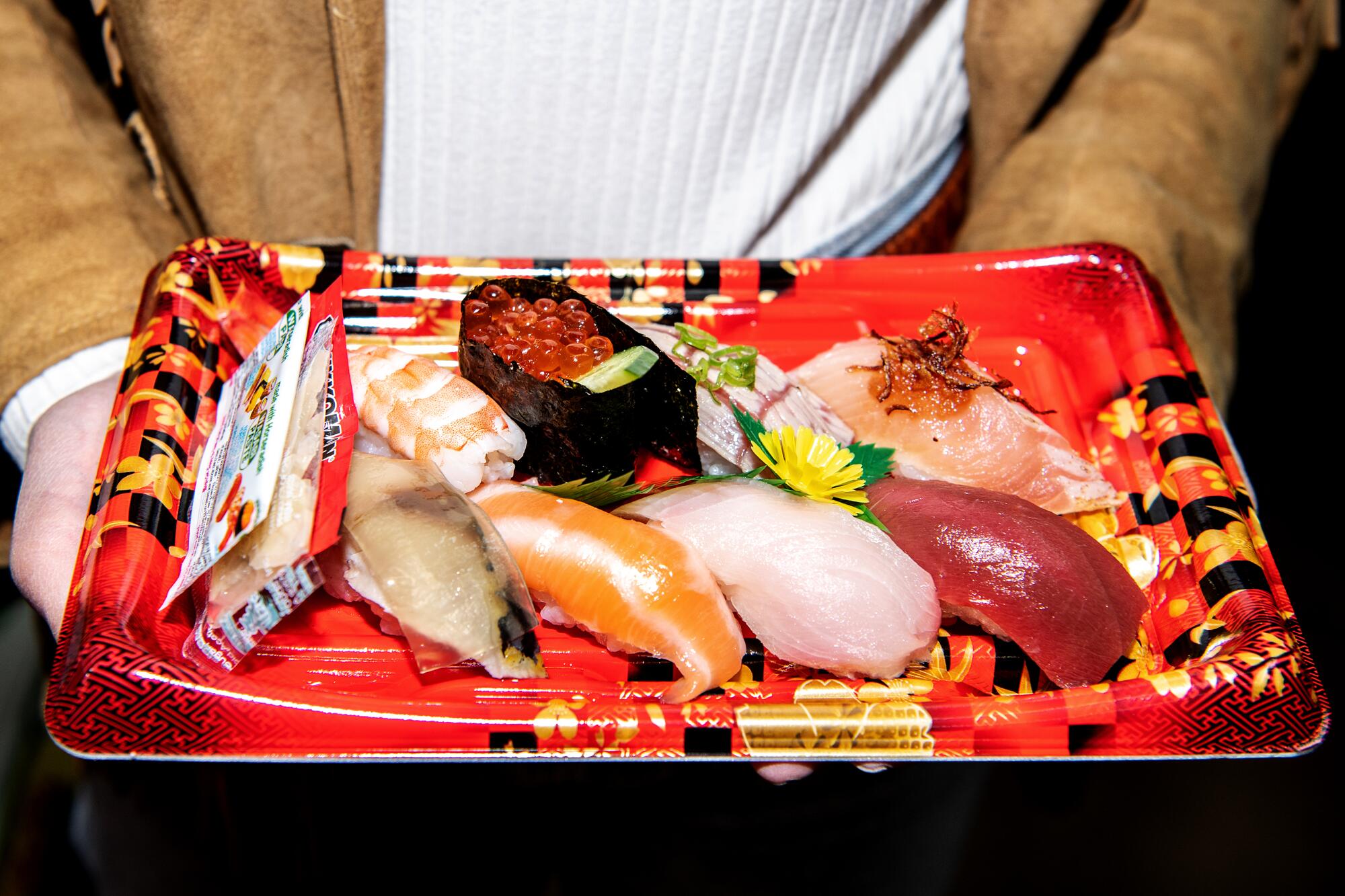
I tend to grade supermarket sushi on a curve. Confined in plastic boxes under fluorescent lights in frigid deli cases, most packaged sushi takes all of the elements essential to good sushi and chucks them out the window in favor of convenience. Oftentimes it can be too cold, the fish cut too thick, the rice under- or overdone and poorly seasoned.
This is your guide to what the best sushi city in America has to offer, from the ultimate California roll to spectacular omakase.
But sometimes there isn’t the time, or money, for a proper sushi meal. Packaged sushi is readily available at just about every market in America, and for the most part it’s reasonably priced.
The American packaged sushi boom most likely started at a Vons market in Marina del Rey in 1986. This is when Advanced Fresh Concepts Corp. opened what it claims was the first in-store sushi bar. Now, you can find sushi at Erewhon and almost every American grocery chain. But for the better stuff, you’ll need to visit your local Japanese market. Some, such as Nijiya, use a central kitchen to make sushi for select locations, while others have in-house chefs. If you see a chef cutting the fish in the market, that’s a good sign. Nigiri and temaki should be eaten soon after the fish has been sliced, the rice molded or nori folded. The less time your sushi is sitting in that deli case, the better.
What follows is the best of the premade stuff. At one market, there’s a 30-year veteran sushi chef slicing fresh fish, patting the rice and offering omakase.
From 20-course omakase tasting menus to snug sushi bars, here’s where to find the best and freshest sushi in Los Angeles.
Saba battera at Nijiya Market, available at multiple locations
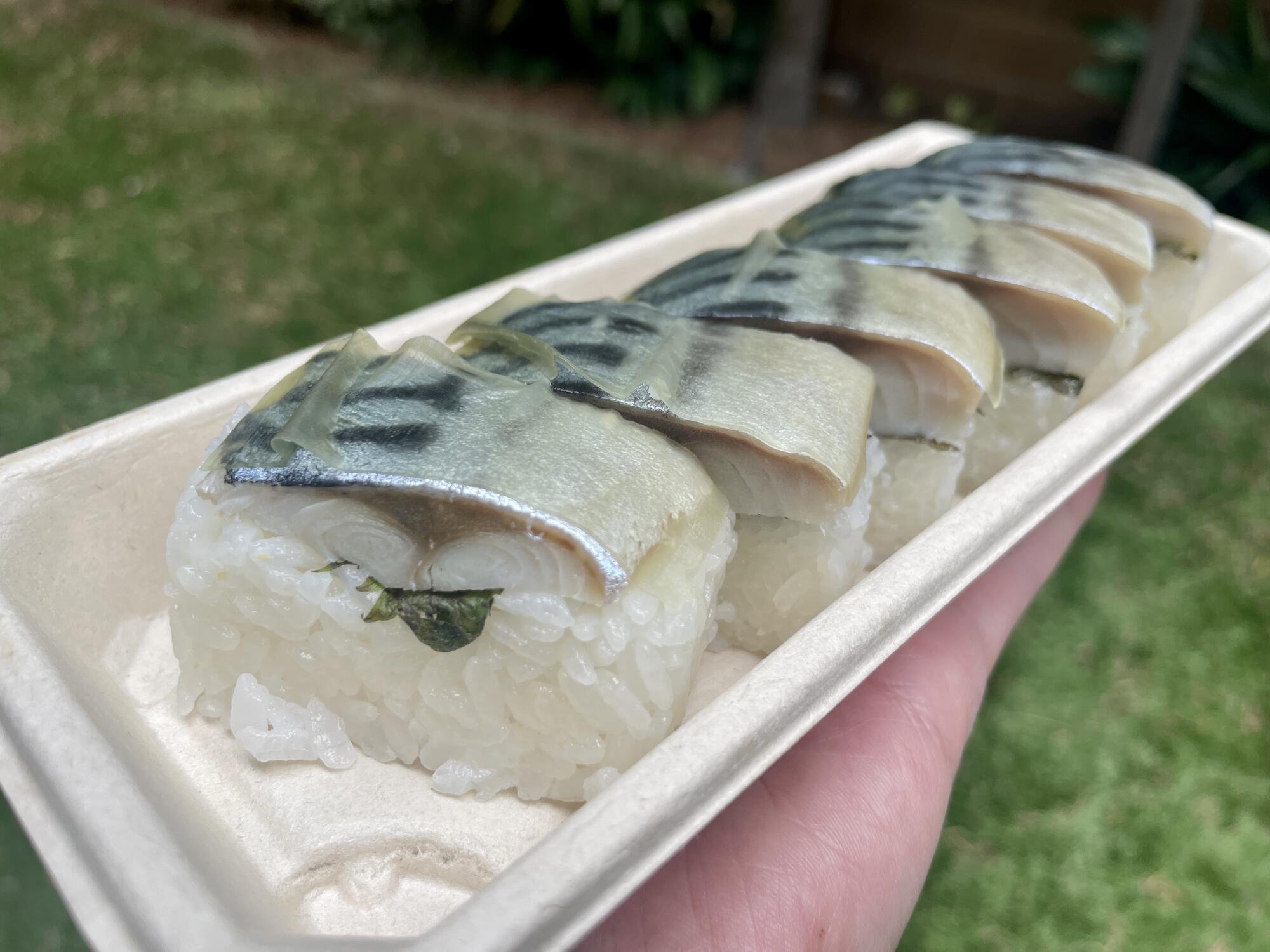
You don’t often see battera sushi on restaurant menus, but saba battera ($8.49) is one of the staples in the sushi case at Nijiya Markets, consistently available and always satisfying. This style of sushi involves transparent wisps of konbu over shiny silver-skinned slabs of cured mackerel, shiso leaf and vinegared rice, tightly packed and molded and cut into rectangles. Curing the fish tempers the fishiness and oiliness just slightly, keeping most of its strong oceanic flavor intact. The shiso adds a bright pop of citrusy mint and the konbu a boost of umami. It’s the opposite of the delicate quality associated with most prized nigiri. A snack for people who enjoy aggressive flavors and textures.
Sakae Sushi has been making simple, homestyle sushi in Gardena since the 1960s. Every piece on the six-item menu is inexpensive and delicious.
Fresh hand rolls at Nijiya Market in Torrance
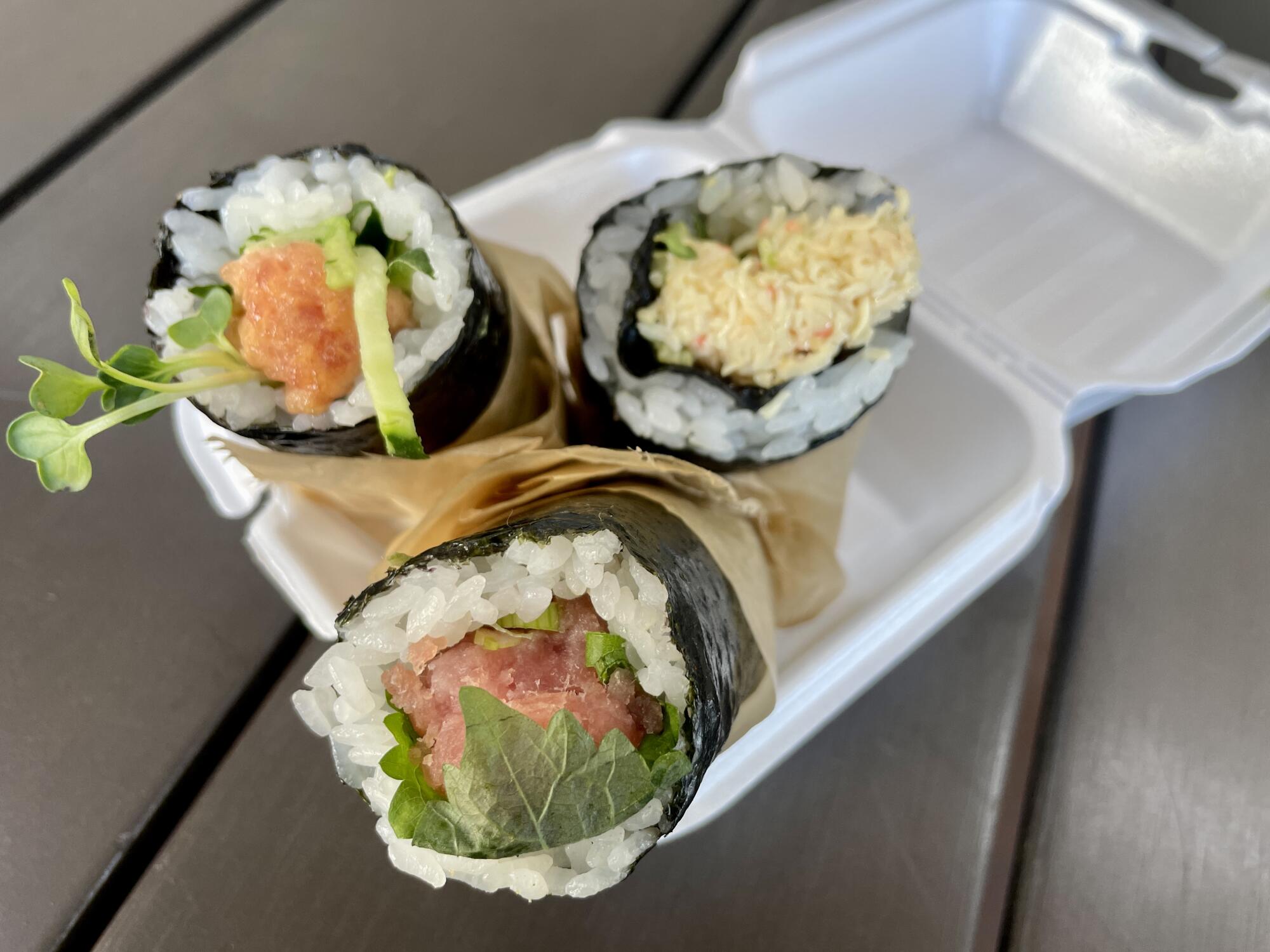
While most Nijiya Markets carry a similar selection of sushi, there’s a fresh food deli along the north wall of the Torrance store that offers a selection of fresh hand rolls. The rolls are displayed in a large serving tray, and you make your selection with a pair of tongs. Skip the imitation crab and look for the negitori ($2.99 per roll). The minced fatty tuna is plentiful, nestled alongside a shiso leaf in the middle of the roll. It’s filling and sizable, the equivalent of three hand rolls at that hand-roll chain everyone likes to frequent.
Aburi salmon nigiri sushi from Marukai Market Little Tokyo, available at multiple locations
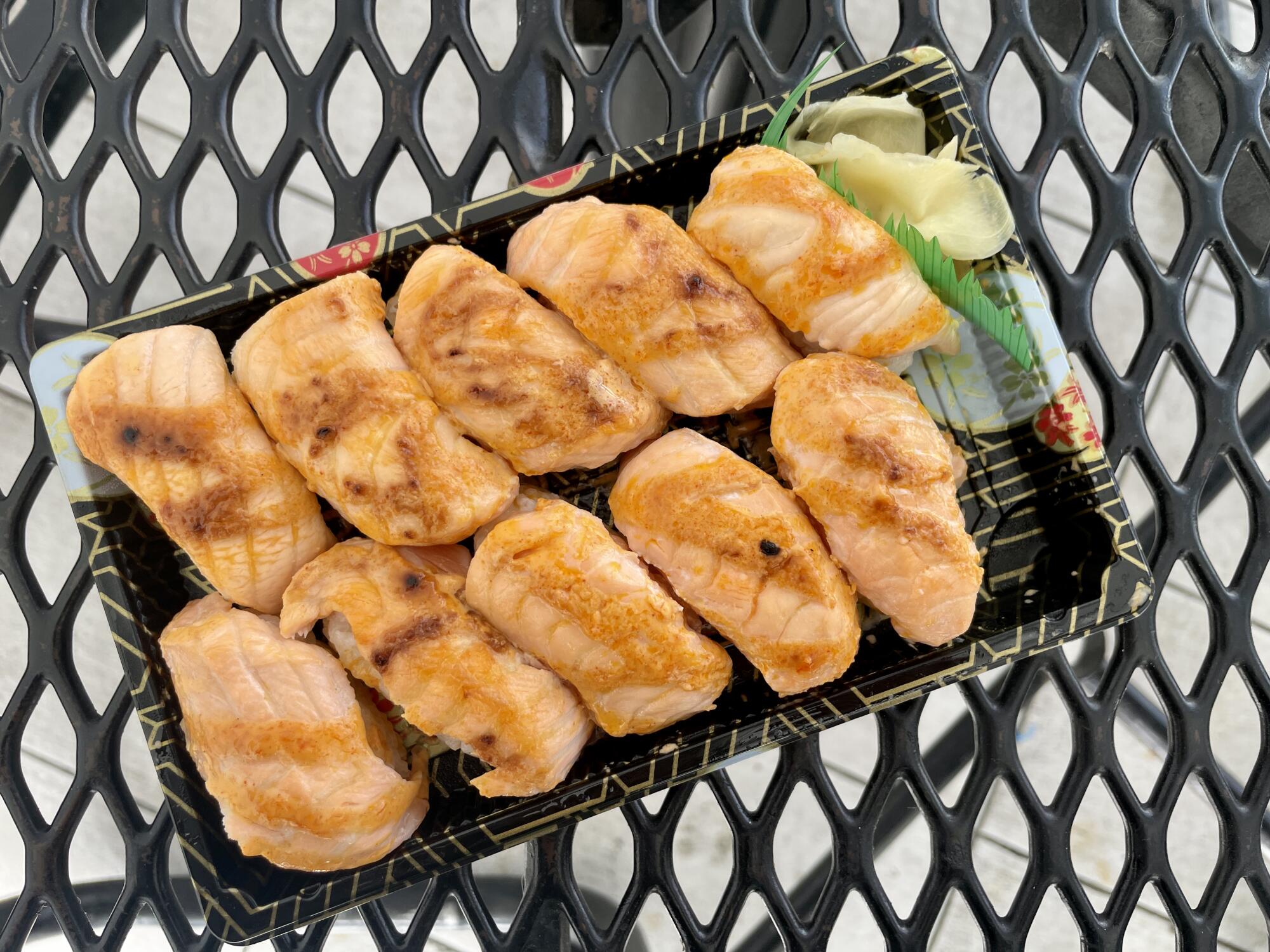
When I can’t decide between a grilled salmon bento box or salmon nigiri, I reach for the aburi salmon nigiri ($16.99) at Marukai Market in Little Tokyo. The seared salmon is cooked until just buttery, then brushed with a sweet vinegar and gochujang glaze. While the rice underneath can be a bit cold and hard at times, the texture of the fish and the vinegar in the glaze save both the texture and the taste of the overall bite.
The current generation of omakase chefs in Los Angeles are returning to the essence of the cuisine. A trip to Tokyo confirms what’s been driving their pursuit for excellence.
Sashimi platter and spicy tuna California roll from Little Tokyo Market Place
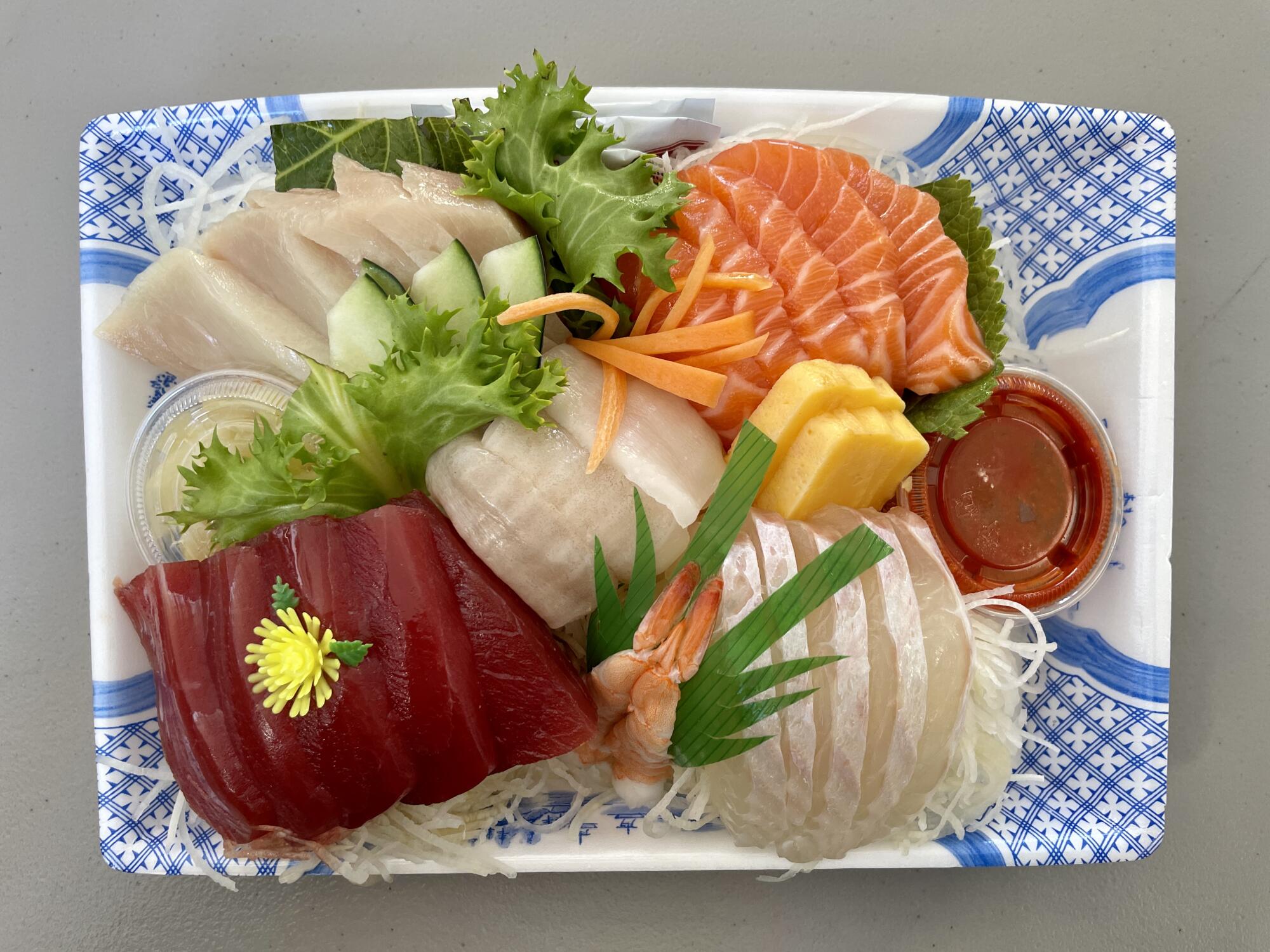
The seafood department takes care of the sashimi platters at the market, slicing fresh fish and arranging it in neat rows pretty enough to serve at your next house party ($34.99 for a small platter). At this specific location, you’ll also find a small deli that prepares various maki and nigiri. It’s technically a separate vendor who rents the space, so you’ll pay for this sushi at the deli before you reach the market checkout line. The standout is the Carolina roll ($15.50), a cut California roll with heaps of spicy tuna on top. It’s your standard California roll with imitation crab, but the rice has none of the ammonia taste or smell sometimes associated with grocery store sushi. If you want something resembling the eel sauce-topped maki at a strip-mall sushi restaurant, this is the roll.
Negitoro hand roll at Mitsuwa Marketplace in Torrance
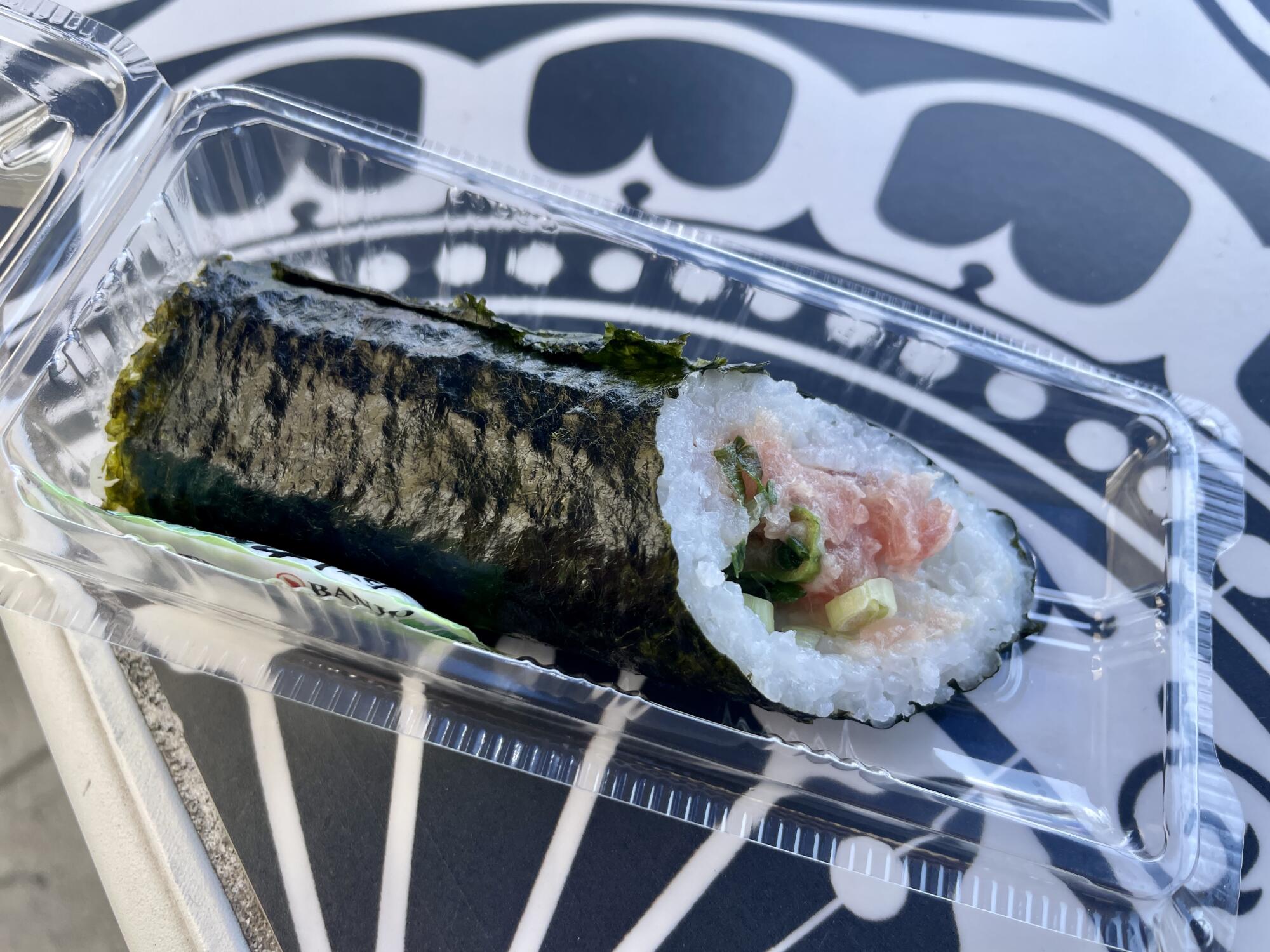
Head to the rear of the store for a sizable selection of rolls and nigiri. The most compelling are easily the negitoro hand rolls ($3.49), each snugly packaged in a slender plastic container. The ratio of fish to rice is almost 1:1, the middle packed with fatty tuna and plenty of diced green onion. The wrapper lacks the crack and crispness of fresh seaweed, but you can bite through it easily and the toasted nori flavor is still present.
The best hand roll bars in Los Angeles are part of the fabric of the city’s sushi scene, serving delicious, super-fresh temaki at affordable prices.
California roll and tekka don at Seiwa Market
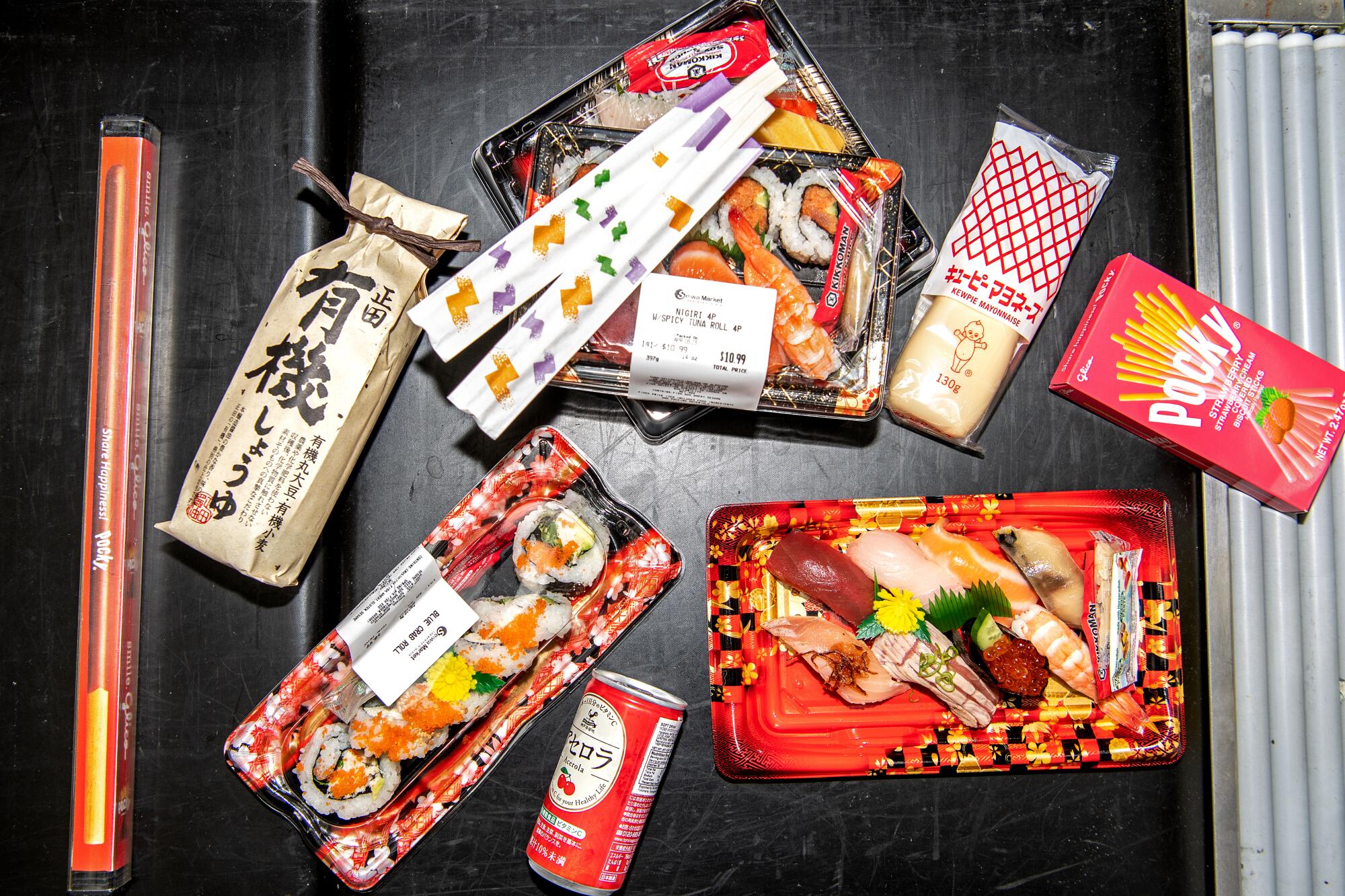
Seiwa Market is home to the best packaged sushi I’ve found outside of the stuff I ate in Japan, thanks to a sushi chef behind the deli counter who has been making sushi for more than 35 years. At the rear of the Torrance store, Shin Nagata, who works as a sushi chef at Kagura in El Segundo in the evenings, prepares the nigiri, poke bowls and sushi platters for the market. Four days a week (he’s off on Wednesday and Sunday), he arrives at 5 a.m., slices the fresh fish and makes nigiri using seasoned koshihikari rice. If he has time, he’ll make omakase. Just let him know how much you want. His colleague Sachiko Mori helps prepare the maki. The blue crab California roll ($8.99) replaces the standard imitation crab with shredded blue crab alongside mixed greens and chunks of avocado.
An ode to the secretly best California roll, perfected over two decades at Yama Seafood in the San Gabriel Valley.
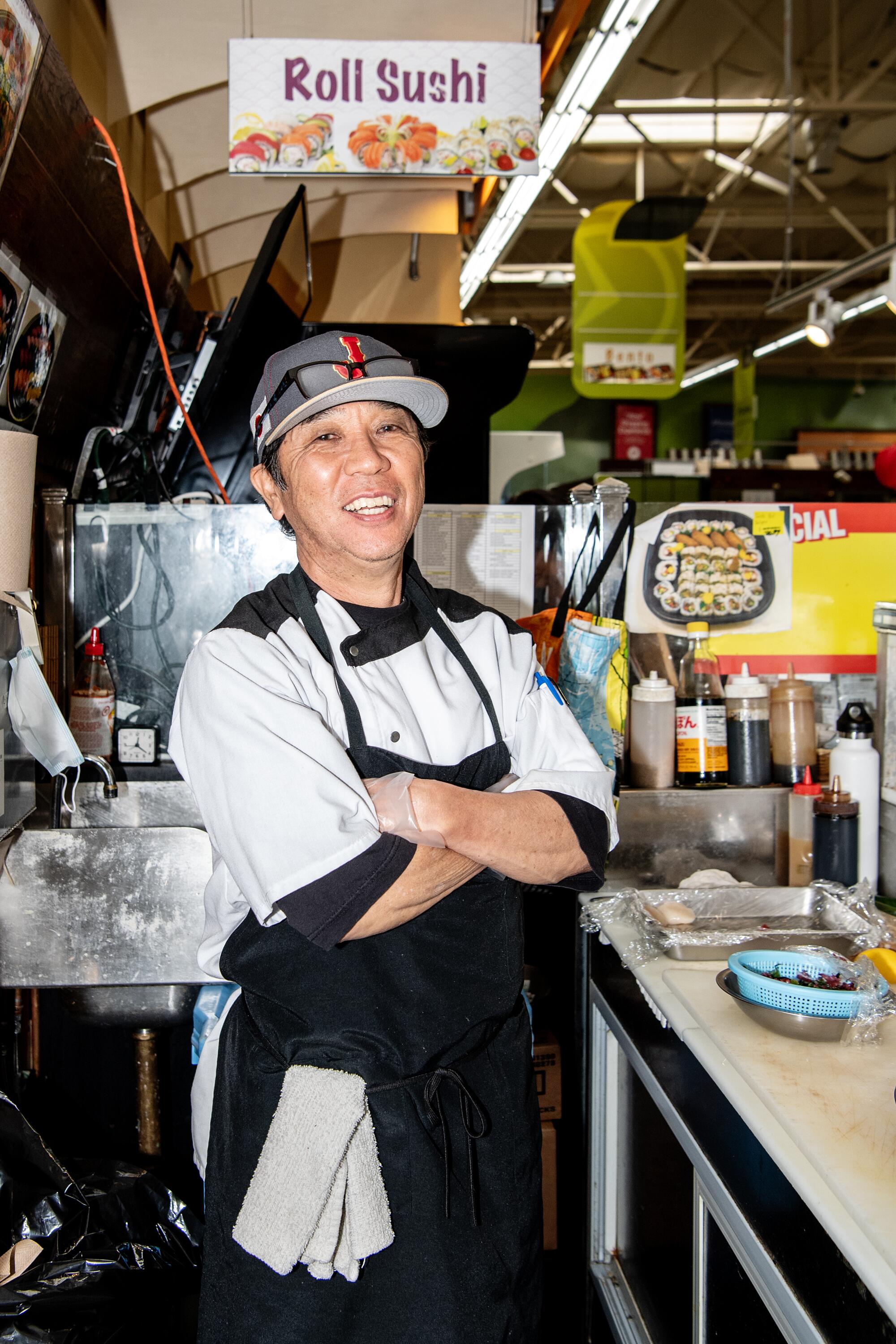
The tekka don ($13.99) features evenly cut slices of tuna, yellowtail and salmon draped over rice that is cooked perfectly and well seasoned, with kernels that don’t fuse into a hard clump. Look out for Nagata’s special kaisen donburi, which regularly features tuna, yellowtail and salmon with a rotating selection of whatever else he has on offer, including saba he cures himself, shrimp, tamago (also made at the store), uni and ikura. The price is always $14.99. “If you eat this at the restaurant, $30, $40 or more,” he said. “I think it’s a very valuable sushi.”
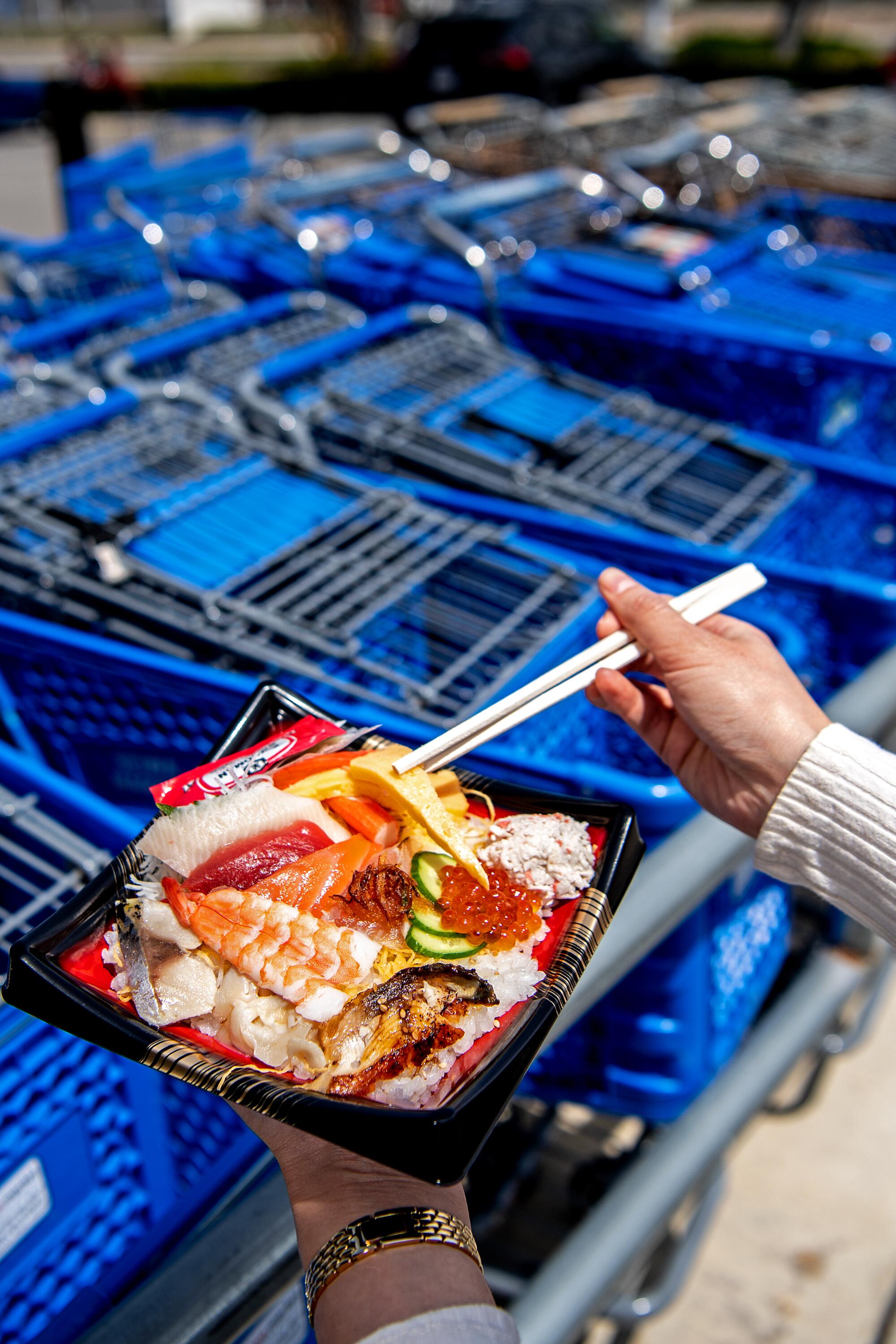
Where to get supermarket sushi
Saba battera, multiple locations of Nijiya Market, nijiyamarket.com
Fresh hand rolls, Nijiya Market Torrance, 2121 W. 182nd St., Torrance, (310) 366-7200, nijiyamarket.com
Aburi salmon nigiri, multiple locations of marukai.com
Sashimi platter and spicy tuna California roll, Little Tokyo Market Place, 333 S. Alameda St., No. 100, Los Angeles, (213) 617-0030, littletokyomarket.com
Negitoro hand roll, Mitsuwa Marketplace, 3525 W. Carson St., Suite 164, Torrance, (310) 782-0335, mitsuwa.com/td
California roll and tekka don, Seiwa Market, 21815 Hawthorne Blvd., Torrance, (310) 802-6220, seiwamarket.com
More to Read
Eat your way across L.A.
Get our weekly Tasting Notes newsletter for reviews, news and more.
You may occasionally receive promotional content from the Los Angeles Times.
